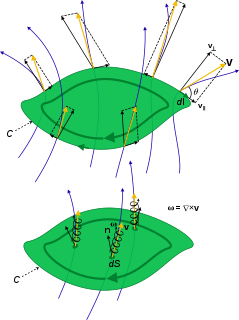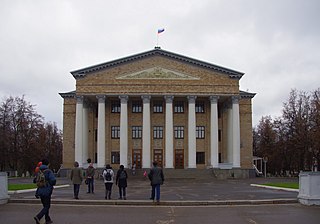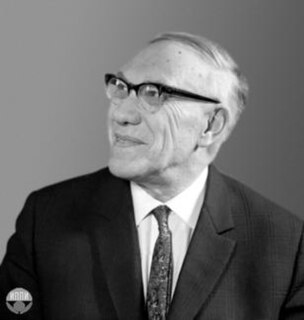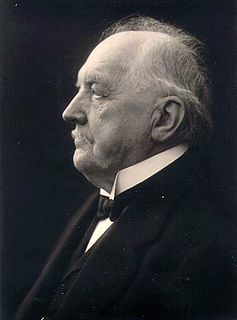| Nikolay Yegorovich Zhukovsky | |
|---|---|
 | |
| Born | January 17, 1847 Orekhovo, Vladimir Oblast, Russian Empire |
| Died | March 17, 1921 (aged 74) Moscow |
| Residence | Moscow, Russia |
| Nationality | Russian |
| Alma mater | Moscow State University |
| Known for | Fluid Dynamics Founder of Aerodynamics |
| Awards | Order of Saint Anna Order of Saint Stanislaus Order of Saint Vladimir |
| Scientific career | |
| Fields | Mathematical Physics |
| Institutions | Imperial Moscow University Bauman Moscow State Technical University Moscow State University |
| Academic advisors | August Davidov |
| Notable students | Sergey Chaplygin Leonid I. Sedov Vasily Shuleikin |
| Influences | Ernst Mach Ludwig Mach Nikolai Brashman |
Nikolay Yegorovich Zhukovsky [1] (Russian :Никола́й Его́рович Жуко́вский,IPA: [ʐʊˈkofskʲɪj] ; January 17 [ O.S. January 5] 1847 – March 17, 1921) was a Russian scientist, mathematician and engineer, and a founding father of modern aero- and hydrodynamics. Whereas contemporary scientists scoffed at the idea of human flight, Zhukovsky was the first to undertake the study of airflow. He is often called the Father of Russian Aviation.

Russian is an East Slavic language, which is official in the Russian Federation, Belarus, Kazakhstan and Kyrgyzstan, as well as being widely used throughout Eastern Europe, the Baltic states, the Caucasus and Central Asia. It was the de facto language of the Soviet Union until its dissolution on 25 December 1991. Although nearly three decades have passed since the breakup of the Soviet Union, Russian is used in official capacity or in public life in all the post-Soviet nation-states, as well as in Israel and Mongolia.
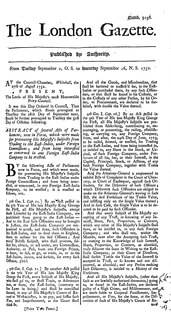
Old Style (O.S.) and New Style (N.S.) are terms sometimes used with dates to indicate that the calendar convention used at the time described is different from that in use at the time the document was being written. There were two calendar changes in Great Britain and its colonies, which may sometimes complicate matters: the first was to change the start of the year from Lady Day to 1 January; the second was to discard the Julian calendar in favour of the Gregorian calendar. Closely related is the custom of dual dating, where writers gave two consecutive years to reflect differences in the starting date of the year, or to include both the Julian and Gregorian dates.

Aerodynamics, from Greek ἀήρ aer (air) + δυναμική (dynamics), is the study of motion of air, particularly as interaction with a solid object, such as an airplane wing. It is a sub-field of fluid dynamics and gas dynamics, and many aspects of aerodynamics theory are common to these fields. The term aerodynamics is often used synonymously with gas dynamics, the difference being that "gas dynamics" applies to the study of the motion of all gases, and is not limited to air. The formal study of aerodynamics began in the modern sense in the eighteenth century, although observations of fundamental concepts such as aerodynamic drag were recorded much earlier. Most of the early efforts in aerodynamics were directed toward achieving heavier-than-air flight, which was first demonstrated by Otto Lilienthal in 1891. Since then, the use of aerodynamics through mathematical analysis, empirical approximations, wind tunnel experimentation, and computer simulations has formed a rational basis for the development of heavier-than-air flight and a number of other technologies. Recent work in aerodynamics has focused on issues related to compressible flow, turbulence, and boundary layers and has become increasingly computational in nature.
Contents
The fundamental aerodynamical theorem, Kutta-Zhukovsky theorem, is named after him and German mathematician Martin Wilhelm Kutta. As is the Joukowsky transform.
The Kutta–Joukowski theorem is a fundamental theorem in aerodynamics used for the calculation of lift of an airfoil and any two-dimensional bodies including circular cylinders translating in a uniform fluid at a constant speed large enough so that the flow seen in the body-fixed frame is steady and unseparated. The theorem relates the lift generated by an airfoil to the speed of the airfoil through the fluid, the density of the fluid and the circulation around the airfoil. The circulation is defined as the line integral around a closed loop enclosing the airfoil of the component of the velocity of the fluid tangent to the loop. It is named after Martin Kutta and Nikolai Zhukovsky who first developed its key ideas in the early 20th century. Kutta–Joukowski theorem is an inviscid theory, but it is a good approximation for real viscous flow in typical aerodynamic applications.

In applied mathematics, the Joukowsky transform, named after Nikolai Zhukovsky, is a conformal map historically used to understand some principles of airfoil design.




